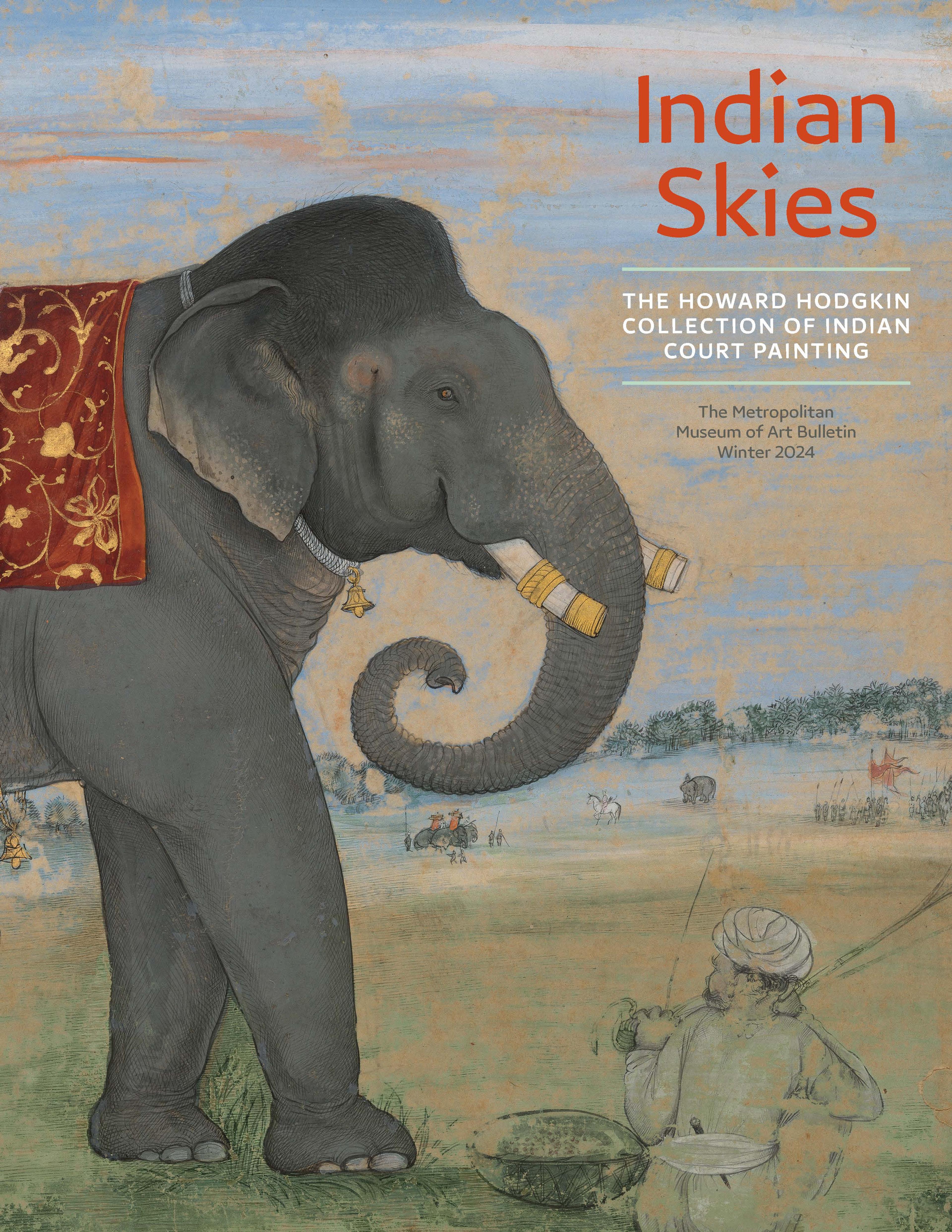Marriage procession in a bazaar; from a Ramayana or Bhagavata Purana series
This panoramic view of a wedding procession through the prosperous bazaar, a masterpiece of descriptive detail and spatial organization, is a folio from a large narrative series illustrating a marriage described in one of the Hindu epics. The unnamed Mandi painter, likely Mughal trained, displays a heightened awareness of Mughal treatments of many components of the picture, such as the striding elephant, the horses in movement, and the clusters of onlookers, who are individualized, as if portraits of known persons. True to Pahari traditions, however, the urban streetscape has multiple points of focus, with rooftops and shop fronts displaying their wares in abundance, all accommodated in a jagged array of projecting structures.
Artwork Details
- Title:Marriage procession in a bazaar; from a Ramayana or Bhagavata Purana series
- Date:ca. 1640–50
- Culture:India, Mandi, Himachal Pradesh
- Medium:Opaque watercolor and gold on paper
- Dimensions:Image: 12 5/8 × 19 5/16 in. (32 × 49 cm)
Sheet: 13 3/4 × 20 1/2 in. (34.9 × 52.1 cm) - Classification:Paintings
- Credit Line:Howard Hodgkin Collection, Purchase, Gift of Florence and Herbert Irving, by exchange, 2022
- Object Number:2022.240
- Rights and Reproduction:Image © Ashmolean Museum, University of Oxford
- Curatorial Department: Asian Art
More Artwork
Research Resources
The Met provides unparalleled resources for research and welcomes an international community of students and scholars. The Met's Open Access API is where creators and researchers can connect to the The Met collection. Open Access data and public domain images are available for unrestricted commercial and noncommercial use without permission or fee.
To request images under copyright and other restrictions, please use this Image Request form.
Feedback
We continue to research and examine historical and cultural context for objects in The Met collection. If you have comments or questions about this object record, please contact us using the form below. The Museum looks forward to receiving your comments.
